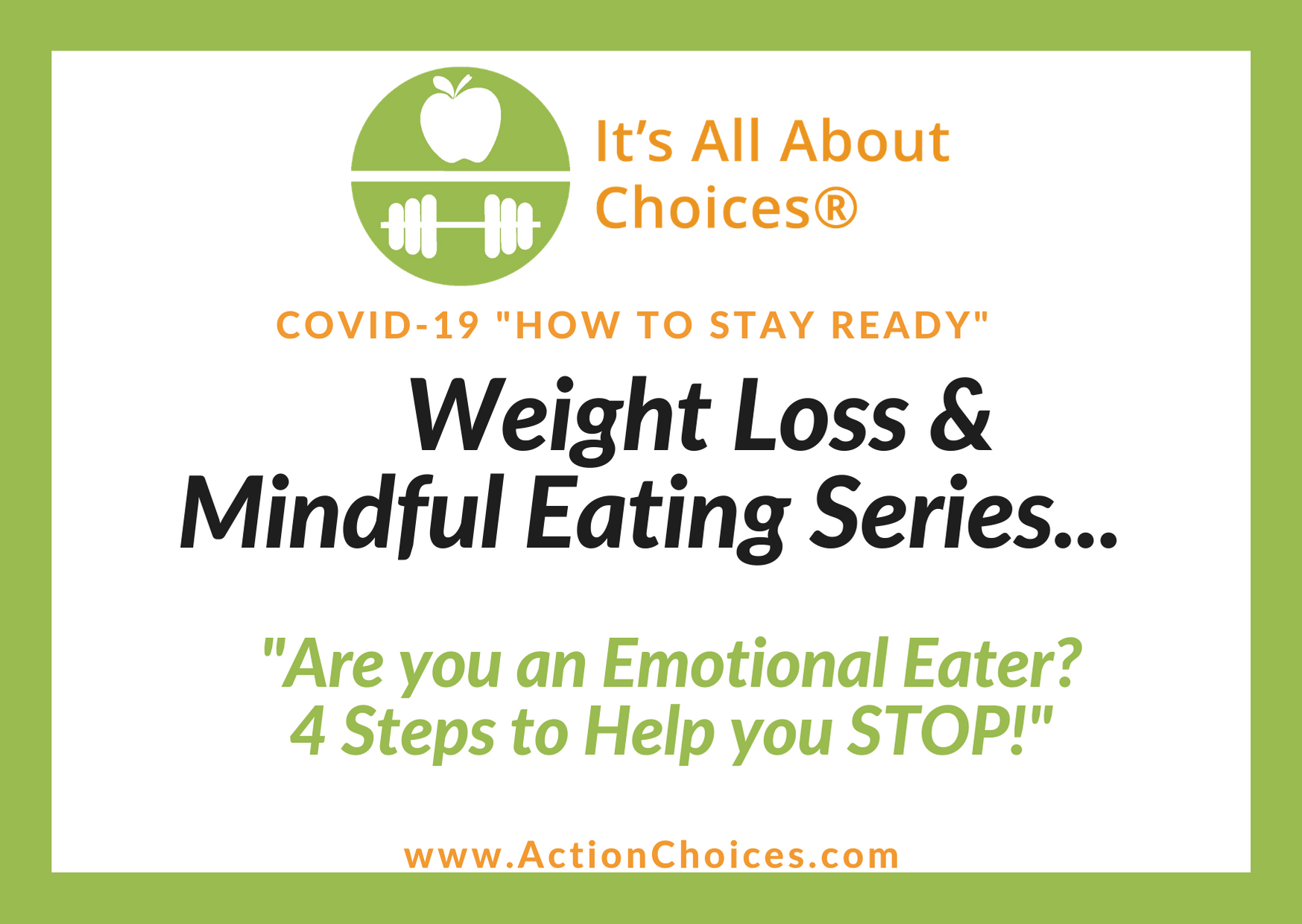Four Tips to Help You STOP!
Do you find yourself raiding the fridge when you’re upset, angry, lonely, stressed, exhausted, or bored? If you answered yes…you guessed it…this is emotional eating!
Emotional eating is using food in an effort to make yourself feel better – in other words – eating to fill emotional needs versus eating to fuel your body. While using food as an occasional pick-me-up or special treat isn’t necessarily a bad thing, eating to cope with unpleasant feelings is rarely effective and often leads to getting stuck in a vicious cycle.
Plus, you’ll likely end up feeling worse, beating yourself up over the extra calories and weight gain, not to mention feeling like you are out-of-control.
Read more to gain four tips to help you “take charge” of your eating PLUS here how I gained control of my own years of emotional eating.
First Tip to Stop Emotional Eating: Identify Your Trigger points
What situations, places, or feelings make you reach for the comfort of food? The first step to stopping emotional eating is to understand what sets you off in the first place. For many, stress is the trigger while sometimes childhood habits are the culprit.
Keeping an emotional eating diary is wonderful tool to help identify patterns and triggers. I do want to mention an important point here keeping a food diary/log is not punishment or should have any negative connotations attached. It’s simple a tool to help you visualize what IS and what IS NOT and to help you move forward to controlling your emotional eating.
Second Tip to Stop Emotional Eating: Find alternatives to feed your feelings
Jot down a list of “Non Food Related” activities that you can turn to for emotional fulfillment or as a means to distract yourself until the craving passes. Keep this list with you so you can pull it out when the craving hits.
This is a tough one! Because this requires a level on mental strength (Not Willpower).
I will be very transparent with you. For me to get control of my years of emotional eating, I had to seek a higher power daily (prayer, reading scriptures, literally crying out ‘Lord help me’) in additional to “non-food related” activities.
Here are some examples of some non-food related activities to help distract the urge to seek food for comfort:
- Talk to a friend.
- Read a book or magazine, or listen to music.
- Exercise – Go for a walk or jog.
- Breathing exercises.
- Engage with family members (spouse, significant other, kids, etc)
- Do housework, laundry, or yard work.
- Write an email.
Something that will work for you that will redirect from thinking about food!
Third Tip to Stop Emotional Eating: Press the “Pause-Button” when Cravings Hit
A mindful-pause can give you the space to check in with yourself and consider your options. Many of us are familiar with scripture: Everyone should be quick to listen, slow to speak and slow to become angry
Let’s revise this scripture to fit Emotional Eating:
Everyone should be quick to STOP and THINK, slow go where food is present and slow to eat for comfort (Some Christian Comedy for you!)
Again, a mindful-pause can give you the space to check in with yourself and consider your options.
It can be helpful to remind yourself that the craving will pass.
Even if you give in to the craving, the fact that you TRIED to stop and observe, you’ll set yourself up for a different response next time
Fourth Tip to Stop Emotional Eating: Support yourself with Healthy Lifestyle Habits
HUGE FOR ME! (watch video replay for more details)
Setting work/life boundaries, making time for daily exercise and making 7-9 hours of sleep a priority can make a huge difference!
It can also be helpful to take time out for R&R and positive connections with others.
Conclusion
Do you know your emotional triggers?
If you do, are you struggling with “Hitting the pause” button and gaining control? Trust me, this is not easy to overcome. You are not alone as I’ve experienced the struggle!
I invite you to have a 1:1 conversation with me to take a deeper dive in into how emotional eating is affecting your mental health, weight loss and health goals.
Click [here] to have a conversation!


